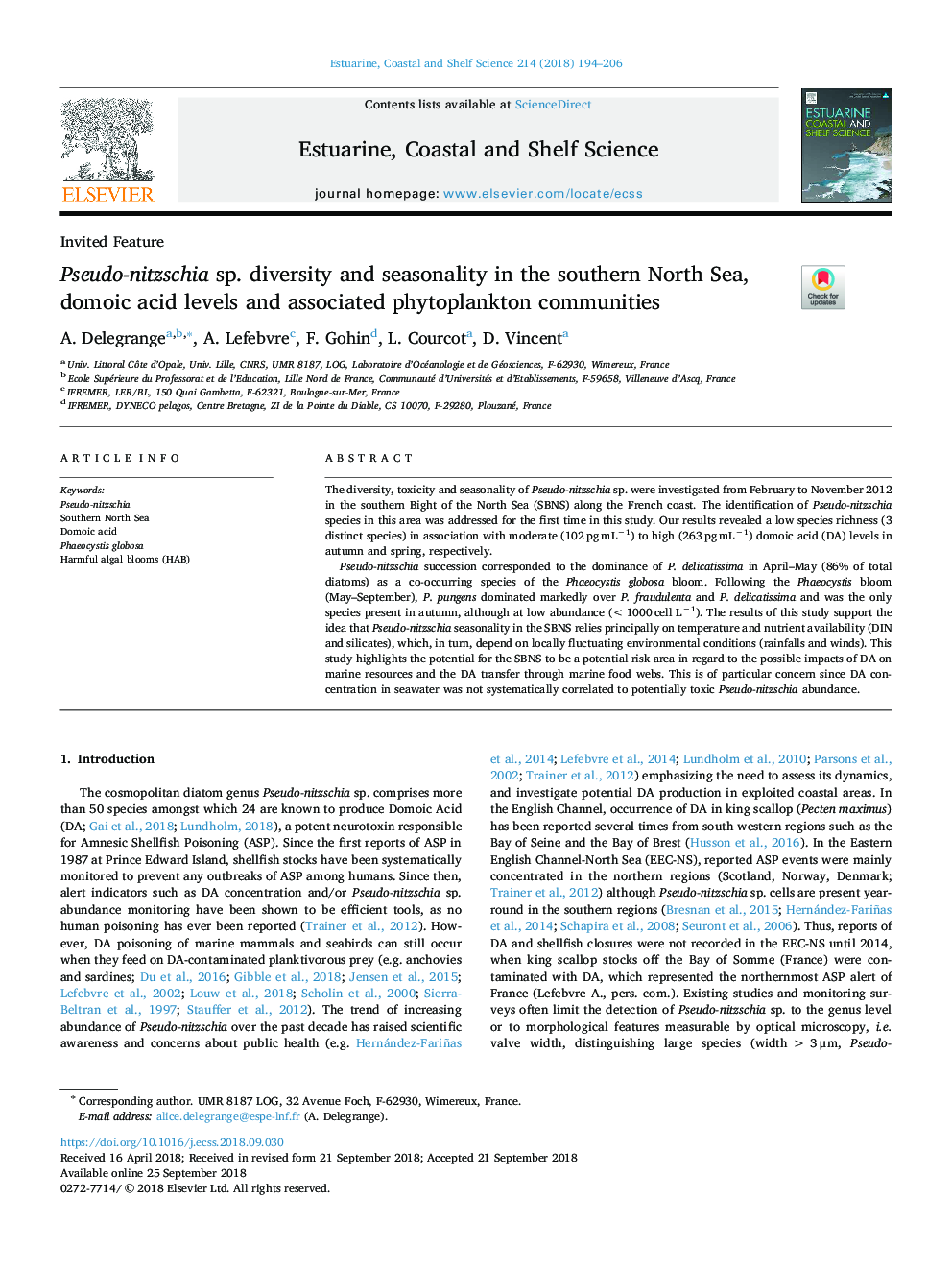| Article ID | Journal | Published Year | Pages | File Type |
|---|---|---|---|---|
| 11024934 | Estuarine, Coastal and Shelf Science | 2018 | 13 Pages |
Abstract
Pseudo-nitzschia succession corresponded to the dominance of P. delicatissima in April-May (86% of total diatoms) as a co-occurring species of the Phaeocystis globosa bloom. Following the Phaeocystis bloom (May-September), P. pungens dominated markedly over P. fraudulenta and P. delicatissima and was the only species present in autumn, although at low abundance (<1000â¯cell Lâ1). The results of this study support the idea that Pseudo-nitzschia seasonality in the SBNS relies principally on temperature and nutrient availability (DIN and silicates), which, in turn, depend on locally fluctuating environmental conditions (rainfalls and winds). This study highlights the potential for the SBNS to be a potential risk area in regard to the possible impacts of DA on marine resources and the DA transfer through marine food webs. This is of particular concern since DA concentration in seawater was not systematically correlated to potentially toxic Pseudo-nitzschia abundance.
Related Topics
Physical Sciences and Engineering
Earth and Planetary Sciences
Geology
Authors
A. Delegrange, A. Lefebvre, F. Gohin, L. Courcot, D. Vincent,
